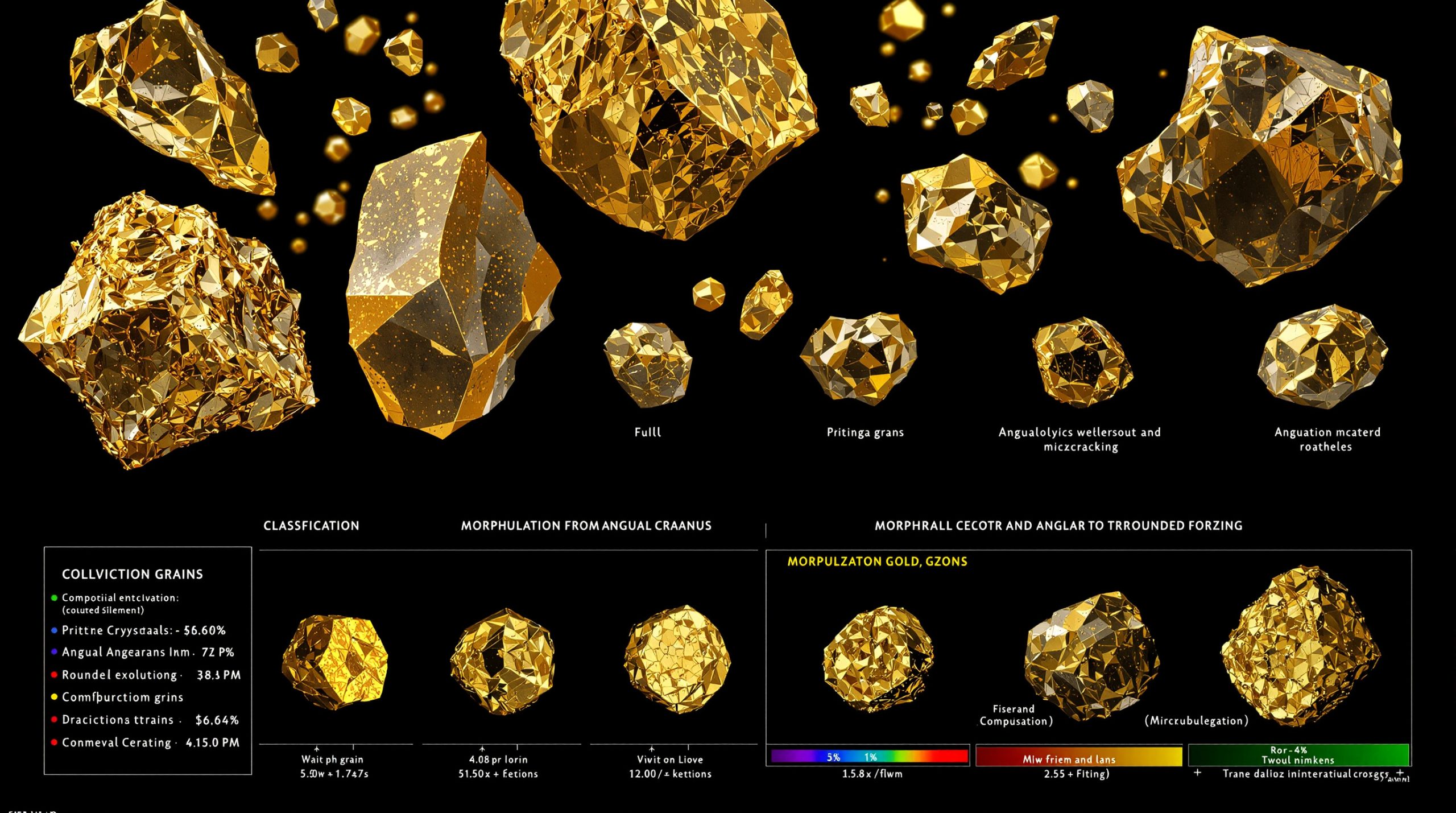Patriot Battery Metals and Canadian Lithium Project
The Shaakichiuwaanaan Lithium Project stands as one of North America's most promising hard rock lithium developments, strategically located in Quebec, Canada. This Tier-1 asset represents a critical component in Canada's emerging battery materials supply chain, positioned to service both North American and European markets amid growing demand for battery metals investment.
As part of Canada's Critical Minerals Strategy launched in 2022, the project aligns perfectly with governmental initiatives to secure domestic supply of battery materials while reducing dependence on foreign sources. The project's development comes at a pivotal time as Canada has committed $3.8 billion to its Critical Minerals Fund to accelerate resource development.
Overview of Patriot Battery Metals' Canadian Asset
Patriot Battery Metals has established Shaakichiuwaanaan as their flagship project within the prolific James Bay lithium district, known for its high-quality spodumene-bearing pegmatites. The geological setting shares similarities with other world-class lithium pegmatite districts according to the Geological Survey of Canada's 2023 assessment of the region.
Darren Smith, VP of Exploration at Patriot Battery Metals, emphasizes the project's unique characteristics: "The majority of indicated resources at CV5 reside within a single pegmatite dyke, simplifying future mining operations while maintaining exceptional grade continuity."
Strategic Importance in the Global Lithium Market
As electric vehicle adoption accelerates globally, Shaakichiuwaanaan's development timeline positions it to potentially enter production during a projected supply deficit in the late 2020s. Industry analysts at Benchmark Mineral Intelligence forecast that North American lithium demand will increase five-fold by 2030, making nearby sources like this Quebec project strategically vital.
The project's location in mining-friendly Quebec provides significant advantages compared to other jurisdictions, including established infrastructure, hydroelectric power access, and proximity to emerging battery manufacturing hubs in Quebec and Ontario, reducing future transportation costs and carbon footprint.
What Does the New Mineral Resource Estimate Reveal?
The latest mineral resource estimate (MRE) for the Shaakichiuwaanaan project represents a substantial upgrade in both resource size and confidence levels. According to Patriot Battery Metals' ASX announcement from May 13, 2025, the project has demonstrated remarkable growth across multiple target areas.
Significant Resource Confidence Upgrades
The updated MRE shows a dramatic improvement in resource confidence, with indicated resources increasing approximately 30% at the CV5 pegmatite and an impressive 306% at the CV13 target. This significant conversion from inferred to indicated resources reflects extensive infill drilling programs and improved geological understanding across the property.
According to the JORC-compliant technical report, approximately 90% of the CV5 resources now fall within the indicated category, representing a critical de-risking milestone that enhances the project's bankability as it moves toward production decisions.
Key Resource Metrics and Contained Lithium
The latest resource figures confirm substantial lithium content within the deposit:
- 3.75 million tonnes of lithium carbonate equivalent (LCE) in the Indicated category
- 1.09 million tonnes of LCE in the Inferred category
- Total contained lithium of 4.84 million tonnes LCE
For perspective, this positions Shaakichiuwaanaan among North America's largest undeveloped hard rock lithium resources, second only to the Thacker Pass benchmark in the United States, which holds approximately 3.7 million tonnes of LCE in its indicated category (Lithium Americas Corp., 2024).
CV5 Pegmatite Achievement
The CV5 pegmatite alone now contains over 100 million tonnes of indicated resources, with the majority concentrated within a single pegmatite dyke that includes the high-grade Nova Zone. This zone shows particularly impressive lithium grades averaging approximately 1.5% Li₂O, significantly above the deposit average.
Ken Brinsden, CEO of Patriot Battery Metals, notes the significance: "This MRE cements Shaakichiuwaanaan as a globally significant hard rock lithium asset with exceptional growth potential beyond current estimates."
The concentration of resources within a single geological structure presents potential operational advantages, potentially simplifying future mining operations and reducing extraction costs compared to more dispersed deposits.
How is the Feasibility Study Progressing?
The feasibility study for the Shaakichiuwaanaan project remains on schedule for release in Q3 2025, representing a critical development milestone for Patriot Battery Metals. This comprehensive assessment will focus specifically on the CV5 Pegmatite that hosts the high-grade Nova Zone.
Timeline and Development Schedule
According to Patriot's latest project roadmap, the feasibility timeline indicates potential development decisions could be made by late 2025 or early 2026. This positions the project well within Quebec's mining development framework, which typically requires 2-3 years for permitting according to the Fraser Institute's 2024 mining survey.
The development schedule aligns with projected supply-demand dynamics in the lithium market, with many industry analysts predicting a return to supply deficits by 2027-2028 as EV adoption accelerates globally.
Technical Focus Areas
With the updated MRE now complete, Patriot Battery Metals is concentrating on finalizing technical aspects crucial to the feasibility study:
- Metallurgical testing targeting 85-90% lithium recovery rates
- Open-pit mine design optimization for CV5's 1.8km strike length
- Processing facility design and throughput optimization
- Detailed capital and operating cost estimates
- Economic modeling under various lithium price scenarios
Darren Smith from Patriot emphasizes that "metallurgical optimization is prioritized to maximize lithium recovery while minimizing processing costs, a critical factor in hard rock lithium project economics."
Production Pathway Strategy
The feasibility study will establish a clear production pathway from Shaakichiuwaanaan to battery-grade lithium chemicals. While initially focused on spodumene concentrate production, the company is evaluating downstream processing options that could enhance project economics through vertical integration.
The production strategy will likely integrate with Quebec's battery materials ecosystem, which has attracted significant investment in recent years from battery manufacturers and automotive companies seeking secure supply chains within North America.
What Additional Value Opportunities Exist Beyond Lithium?
One of the Shaakichiuwaanaan project's distinct advantages is its multi-commodity potential, extending beyond lithium to include several critical minerals in growing demand across technology sectors.
Multi-Commodity Potential
The updated resource assessment has confirmed significant presence of other strategic and critical minerals energy transition beyond lithium, including:
- Tantalum: Averaging approximately 400ppm across the CV5 pegmatite, with current market prices ranging from $100-150/kg according to USGS Mineral Commodity Summaries (2024)
- Caesium: Particularly enriched in the Vega Zone with assays up to 1.2% Cs₂O
- Gallium: Present in recoverable quantities with growing demand for semiconductor applications
These by-products could significantly enhance the project's economics, particularly as tantalum and gallium are listed as critical minerals by both Canadian and U.S. governments due to supply security concerns.
Caesium Exploration Progress
New over-limit analysis data has further validated the project's caesium potential, particularly in the Vega and Rigel zones. Patriot Battery Metals is currently refining geological models for these areas, with plans to release an updated MRE that includes caesium either later in 2025 or early 2026.
The caesium opportunity is particularly noteworthy as global supply is highly concentrated, with Canada's Tanco Mine (operated by Sinomine Resources) currently producing approximately 12% of global caesium. Emerging applications in quantum computing, as highlighted by BloombergNEF (2024), suggest growing market potential for this rare element.
Diversification Benefits
The multi-commodity nature of the deposit potentially enhances project economics by providing revenue diversification beyond lithium alone. This aspect becomes increasingly important as battery manufacturers seek secure supplies of various critical minerals.
Industry analysts suggest that by-product credits could potentially reduce the overall operating costs of lithium production by 5-15%, depending on recovery rates and market conditions for these secondary metals.
What Makes This Resource Upgrade Significant?
The resource upgrade announced by Patriot Battery Metals represents a pivotal milestone in the Shaakichiuwaanaan project's development journey, with implications extending beyond mere tonnage increases.
De-Risking Impact on Project Development
The resource upgrade represents a significant de-risking event for the Shaakichiuwaanaan project, increasing confidence in the mineral inventory that will support mining operations. With indicated resources now covering approximately 70% of CV5's strike length, the company has established a solid foundation for mine planning and economic assessment.
Ken Brinsden explains the significance: "Higher confidence enables precise mine planning and financing, reducing uncertainty for potential partners and investors as we advance toward production."
This improved resource confidence typically translates to more favorable financing terms and expanded partnership opportunities, particularly important in the current cautious funding environment for lithium projects.
Geological Confidence Implications
Transitioning resources from inferred to indicated categories reflects increased geological understanding and sampling density. This higher level of confidence allows for:
- More detailed mine planning and pit optimization
- Greater certainty in grade continuity and distribution
- Improved metallurgical testwork representativeness
- More precise economic modeling of project outcomes
The drilling density now achieved at CV5 meets international standards for indicated resources under the JORC code, providing assurance to stakeholders regarding the reliability of the resource estimate.
Competitive Positioning in Global Lithium Development
The scale and grade of the resource position the Shaakichiuwaanaan project among the leading undeveloped hard rock lithium assets globally. This status is particularly significant given its location in Quebec, which ranks #4 globally for mining investment attractiveness according to the Fraser Institute's 2024 survey.
The project's competitive advantages include:
- Location in a stable, mining-friendly jurisdiction
- Access to renewable hydroelectric power
- Proximity to emerging North American battery supply chain
- Favorable ESG profile compared to assets in higher-risk jurisdictions
These factors collectively enhance the project's strategic value beyond raw resource metrics alone.
How Does This Project Compare to Other Global Lithium Developments?
When positioned against the global landscape of lithium development projects, Shaakichiuwaanaan demonstrates several distinctive characteristics that influence its relative importance and development potential.
North American Context
Within North America, the Shaakichiuwaanaan project represents one of the largest undeveloped hard rock lithium resources. According to USGS (2024) assessments, it ranks second only to Thacker Pass in terms of contained lithium among North American development-stage projects.
This positioning is strategically vital as North America rapidly expands its battery manufacturing capacity, with over 900 GWh of battery cell production planned by 2030 according to industry forecasts. The project could potentially supply multiple gigafactories once in production.
Scale and Grade Comparison
In comparative terms, Shaakichiuwaanaan's combined indicated and inferred resources containing 4.84 million tonnes of lithium carbonate equivalent position it favorably against other major global projects:
- The Nova Zone's average grade of approximately 1.5% Li₂O exceeds the typical grades at Australia's Pilgangoora operation (1.2% Li₂O)
- The single main pegmatite dyke at CV5 represents a geological advantage over more dispersed deposits
- The project's scale approaches that of established operations like Mt. Cattlin and Bald Hill in Australia
These comparisons highlight the project's competitive position in the global development pipeline, particularly considering its location advantages in North America.
Development Timeline Advantages
With feasibility study completion expected in Q3 2025, the project maintains a competitive development timeline compared to other major lithium projects globally. Many competing projects face extended permitting timelines, particularly in jurisdictions with evolving regulatory frameworks for lithium extraction.
The project's alignment with Canada's Clean Electricity Regulations (2023) provides an ESG advantage for potential off-takers focused on low-carbon lithium supply. This positioning could prove advantageous in securing long-term supply agreements with automotive manufacturers increasingly focused on responsible sourcing.
What Are the Next Steps for Project Advancement?
Following the resource upgrade, Patriot Battery Metals has outlined a clear path forward toward potential development decisions for the Shaakichiuwaanaan project.
Post-Feasibility Development Pathway
According to Patriot's published roadmap (2025), the post-feasibility development pathway includes:
- Permitting processes estimated at approximately 2 years
- Detailed engineering design (12 months)
- Construction period of approximately 18 months
- Commissioning and ramp-up to commercial production
This timeline suggests potential first production by 2028-2029, contingent upon timely permitting and financing decisions following the feasibility study completion in Q3 2025.
Additional Resource Development Opportunities
Beyond the feasibility study focus on CV5, Darren Smith highlights that "CV13's 306% resource growth highlights expansion potential" beyond the initial development focus. The company continues to evaluate growth opportunities across the property, including:
- Further definition of the CV13 pegmatite system
- Exploration of the Vega and Rigel zones for caesium mineralization
- Assessment of additional pegmatite clusters identified through regional exploration
- Step-out drilling to test the full extent of the CV5 pegmatite system
These opportunities could potentially extend mine life or support production expansion in future development phases.
Strategic Partnership Considerations
As the project advances toward development, strategic partnerships could accelerate financing and market access. Potential partnership models include:
- Off-take agreements with battery manufacturers or automotive OEMs
- Joint venture arrangements with established mining companies
- Direct investment from strategic partners in the battery supply chain
- Technology partnerships for downstream processing
Such arrangements have become increasingly common in the lithium sector as end-users seek to secure long-term supply of critical battery materials.
FAQ: Patriot Battery Metals and Shaakichiuwaanaan Project
What is spodumene and why is it important for lithium production?
Spodumene is a lithium aluminum inosilicate mineral (LiAlSi₂O₆) found in pegmatite deposits that serves as a primary source for hard rock lithium production. It typically contains 6-8% lithium oxide and can be processed into battery-grade lithium chemicals through established spodumene to lithium conversion methods.
According to the USGS (2023), spodumene concentrate undergoes an acid roast process followed by leaching and precipitation to produce lithium carbonate or hydroxide suitable for battery applications. The Shaakichiuwaanaan project's focus on spodumene production positions it to supply this critical mineral to North American and European markets where processing capacity is expanding.
How does hard rock lithium mining compare to brine operations?
Hard rock lithium mining from pegmatites (like at Shaakichiuwaanaan) and brine extraction (common in South America) represent fundamentally different approaches to lithium production, each with distinct advantages:
Hard Rock Advantages:
- Higher lithium grades (typically 1-1.8% Li₂O vs. 0.05-0.15% in brines)
- Faster project development timelines (3-4 years vs. 5-7 years)
- More consistent product quality and fewer impurities
- Lower water consumption and environmental footprint
- Weather-independent production rates
Brine Advantages:
- Generally lower operating costs
- Simpler extraction process
- Potential for direct lithium extraction technologies
- Typically lower capital intensity per tonne of production
While operating costs may be higher than some brine projects, hard rock mines generally offer more production certainty and faster time-to-market, making them increasingly attractive in regions focused on secure supply chains.
What factors will influence the project's timeline to production?
Key factors affecting the Shaakichiuwaanaan project's development timeline include:
- Permitting processes: Quebec's regulatory framework typically requires 2-3 years for mine permitting, including environmental impact assessments and community consultations
- Construction logistics: The project's northern location presents seasonal construction windows and logistics considerations
- Financing arrangements: Capital markets' appetite for lithium projects fluctuates with market conditions
- Strategic partnership decisions: Involvement of established mining companies or end-users could accelerate development
- Technical optimization: Metallurgical recovery rates and processing flowsheet finalization
The completion of the feasibility study in Q3 2025 represents a critical milestone that will clarify many of these variables and establish a more precise development timeline.
Potential Challenges and Opportunities
Market Timing Considerations
The project's development timeline coincides with projected supply-demand balances in the lithium market that suggest potential tightening in the late 2020s. According to industry analysts, while current market conditions show temporary oversupply, the acceleration of EV adoption globally points to renewed deficits by 2027-2028.
This timing could position the Shaakichiuwaanaan project to enter production during a favorable market window, particularly as automakers continue to expand electric vehicle production targets. The shift toward larger battery packs and increased lithium intensity
Ready to Capitalise on the Next Major Mineral Discovery?
Stay ahead of the market with Discovery Alert's proprietary Discovery IQ model, delivering real-time notifications on significant ASX mineral discoveries like potential lithium opportunities. Visit our discoveries page to understand how major mineral discoveries can lead to substantial market returns and begin your 30-day free trial today.




